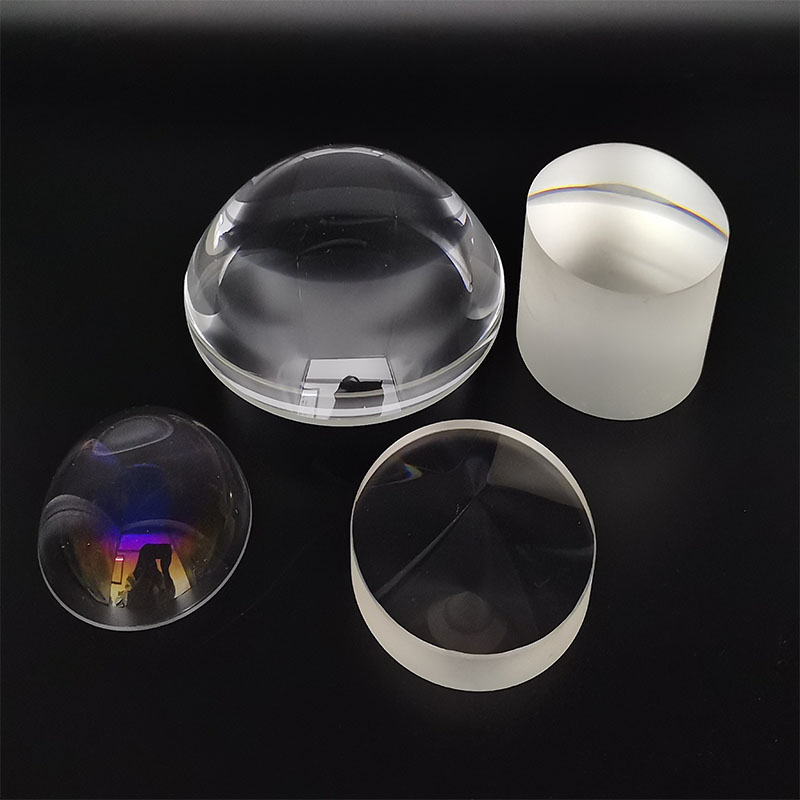
Optical lenses are made based on the principles of light refraction. Lenses are optical components made of transparent materials (such as glass or crystal). A lens is a refracting device with refractive surfaces that are either two spherical surfaces (segments of a sphere) or one spherical surface (segment of a sphere) and one planar surface. The images produced by lenses can be real or virtual. As the core components of optical systems, optical lenses are widely used in microscopes, telescopes, cameras, and other devices.
Optical lenses can be classified into various types based on their shape and function. The most common classification method is based on the lens's curvature and refractive properties, categorizing them into convex lenses and concave lenses. Convex lenses are thicker in the middle and thinner at the edges and have the function of converging light. They are commonly used in magnifying glasses, microscopes, and camera lenses. The working principle of a convex lens is to use refraction when light passes through the lens, causing parallel light rays to converge at the focal point, thus forming a clear image. Concave lenses, on the other hand, are thinner in the middle and thicker at the edges and have the function of diverging light. They are commonly used in corrective lenses for myopia and certain optical instruments. The working principle of a concave lens is to cause parallel light rays to diverge after passing through the lens, as if originating from a virtual focal point.
With the advancement of technology, single convex or concave lenses can no longer meet the demands of complex optical systems. Compound optical lenses have emerged, achieving higher optical performance through the combination of multiple lenses. Achromatic lenses are a type of compound lens made by combining two or more lenses of different materials, primarily used to eliminate chromatic aberration. Chromatic aberration is a phenomenon where different wavelengths of light have different refractive indices in the lens, leading to image blur. Achromatic lenses combine lenses of different materials to converge different wavelengths of light at the same focal point, thus improving image quality. Aspherical lenses are lenses whose surface curvature is not a simple sphere. They can effectively reduce spherical aberration and improve image quality. Spherical aberration is a phenomenon where the refractive indices of the edges and the center of a spherical lens are different, causing image blur. Aspherical lenses use precisely designed surfaces to ensure uniform refraction of light within the lens, resulting in clearer images.
The working principles of optical lenses have evolved with technological progress, from simple geometric optics to complex wave optics and modern computational optics. Each step has advanced the technology of optical lenses. Geometric Optics: Geometric optics studies the basic theories of light propagation and refraction. It explains the fundamental working principles of convex and concave lenses through the straight-line propagation and refraction laws of light. Geometric optics laid the foundation for the design and application of optical lenses. Wave Optics: Wave optics studies the wave-like nature of light, explaining phenomena such as interference, diffraction, and polarization. The development of wave optics has made lens design more precise, allowing better control of light propagation and imaging. Computational Optics: Modern computational optics utilizes computer simulations and optimization algorithms to design lenses with superior performance. Computational optics can simulate the propagation of light through lenses, optimizing the lens's curvature and materials to achieve higher optical performance.